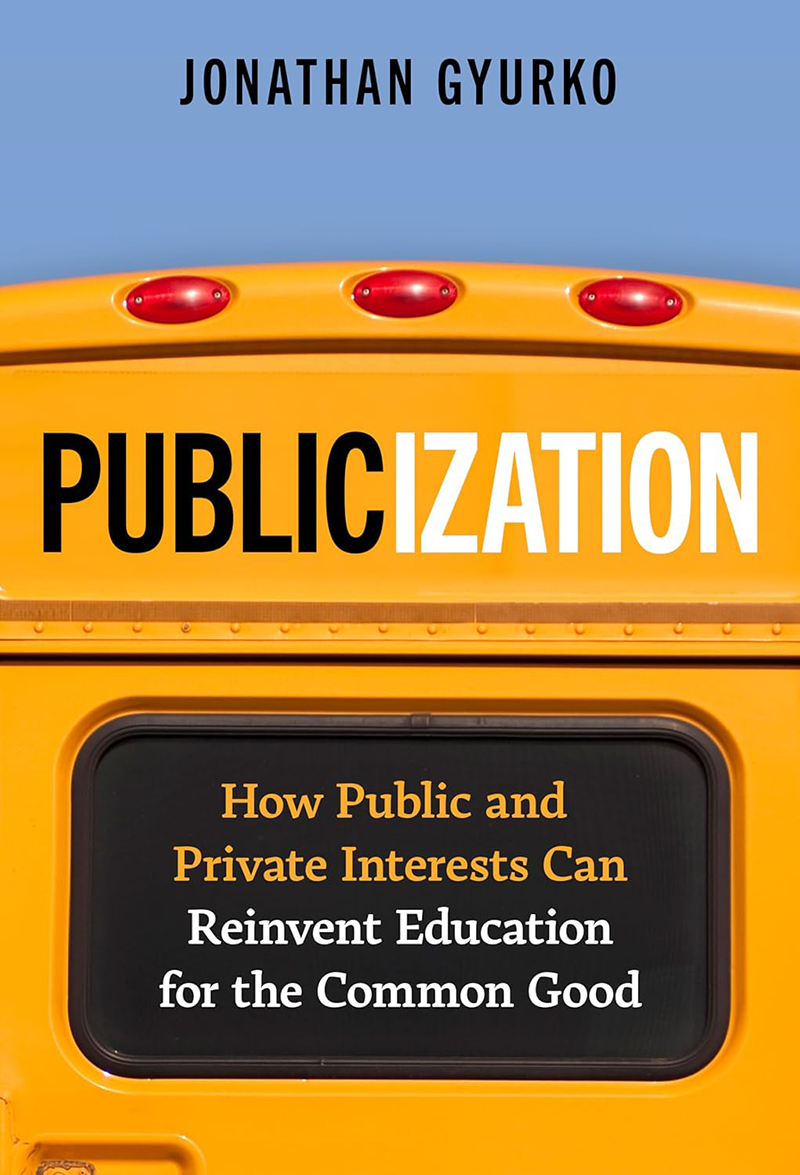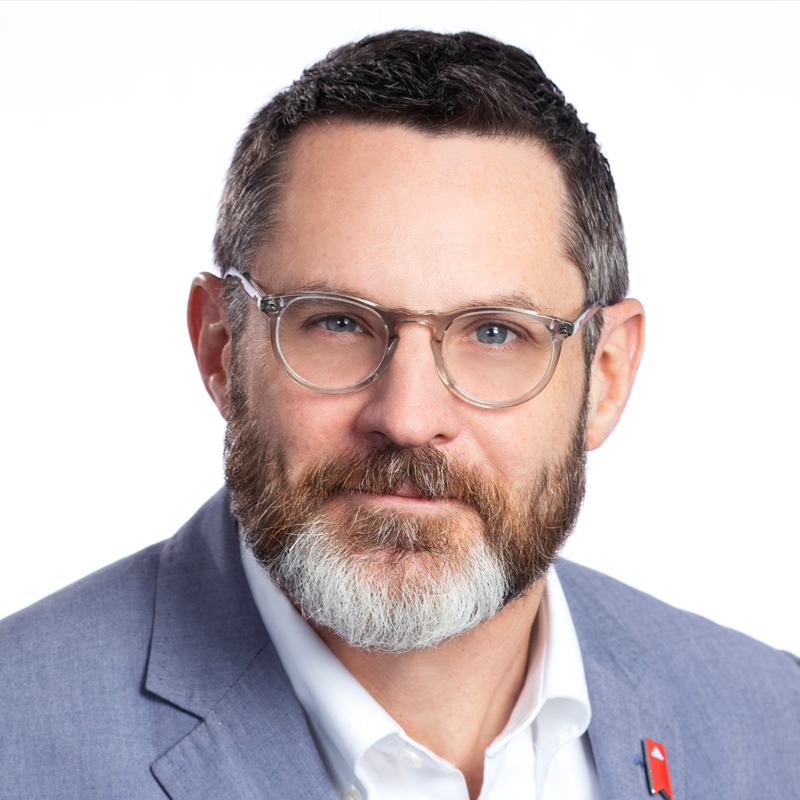
This year marks the 75th anniversary of the first cartoon featuring Wile E. Coyote and the Road Runner. According to the director of early episodes, the show followed a series of rules on how the two had to interact with one another, such as: the only dialogue could be the Road Runner’s “Beep, beep!” and all the Coyote’s contraptions had to come from the ACME Corporation.
One particular rule came to mind as I read Jonathan Gyurko’s new book Publicization: “Whenever possible, make gravity the Coyote’s greatest enemy.” In my recasting, Gyurko plays the role of the Coyote, building elaborate contraptions to come ever so close to catching the Road Runner (a grand unified theory of education policy), only to be foiled by gravity (the pull of competing interests) again and again.
There is much to recommend in this book. Gyurko applies the framework Jonathan Rauch developed in The Constitution of Knowledge to schools, encouraging them to “teach the knowledge and knowledge-making process” that can “bequeath these social, fact-making norms to generation after generation.” A very good idea. He also argues persuasively for a recommitment to norms of democratic process that eschew treating every election as a potentially cataclysmic event and reminds people there will be another election and another opportunity to be heard. Seeing elections as a series of repeated games pushes people to behave better now, as their comportment could impact their later turns. Additionally, Gyurko offers an interesting standard for judging schools’ and teachers’ performance—the “good faith” standard—that provides an opportunity for blending subjective wisdom and prudence with objective data in useful ways. Finally, his belief that the ultimate goal of education is eudaimonia, Aristotle’s articulation of human flourishing, is a welcome contrast with most contemporary books on education reform and a North Star to which many educational traditions can orient themselves.

by Jonathan Gyurko
Teachers College Press, 2024, $39.95; 224 pages.
The book is thought-provoking. Even though I disagree with wide swaths of it, I’m glad that I read it. In a time of polemics and tweet-length arguments, someone taking the time and effort to fully articulate an alternative vision for our education system based both on extensive experience and deep engagement with key texts of philosophy, political science, and education policy is laudable. We would be much better off if this is how we ordinarily engaged with each other.
As the title suggests, Gyurko positions his book as opposed to “privatization,” and that is how he starts to get himself into a bother. In the early pages, he defines the privatization project as one that “applied market-style reforms to schools, their districts, and education systems.” As the book unfolds, this is understood to include everything from school choice to school accountability to teacher evaluation reform.
I’ll set aside the clearly pejorative nature of the name for a moment and grant the premise with respect to school vouchers and even charter schools, which clearly are trying to bring private actors into the system. But what does school accountability or teacher evaluation have to do with markets? These are centrally planned, command-and-control measures of public administration that would look more familiar to a commissar than an entrepreneur. “Privatization” (like critical race theory to some sections of the right) becomes a simplistic shorthand for “stuff I don’t like.”
The problem recurs throughout the book. Gyurko maintains that privatization is centered on “alignment” and goes so far as to say that “the privatization project is premised on control.” But he both decries the lack of alignment in a freewheeling, laissez-faire system of school choice and proposes creating a national set of teaching standards to which teacher preparation, practice, and evaluation can, in his own words, align. So which is it? Is alignment good or bad? Are the privatizers or the publicizers for it or against it?
This is the gravity that keeps him from catching his quarry. Gyurko repeatedly fails to demonstrate that he understands where the people who think differently from him are coming from, nor does he acknowledge the insight they might have into the problems with the education system.
Rather than seeing those who advance school choice or school accountability or teacher evaluation as people who share many of the goals that he spells out for his ideal public education system, he considers them a shadowy cabal on a four-decade rampage of destruction. By not understanding or appreciating the movement he sets his ideas in opposition to, he misses many opportunities to build bridges and find common cause.
This posture makes it much tougher to believe him when he writes quite eloquently about a need for a new education politics that “must actively work to broaden the dialogue, by encouraging others to engage, particularly those with divergent views.” I am intensely skeptical of efforts to increase democracy and dialogue that paint political opponents as two-dimensional bad guys. And, for what it’s worth, there is a large amount of disagreement within the educational choice movement alone (between charter school supporters and voucher supporters, between means testers and universal eligibility folks, and for those who want more or less regulation). Many, if not most, of these people do not see themselves as participating in the same project as school accountability or test-based teacher evaluation supporters.
Perhaps the most ACME-like contraption in the book is Gyurko’s model of “mutual accountability,” a mechanism to replace the traditional top-down accountability of the post-NCLB era. He argues that in place of a traditional labor-and-management industrial model of accountability, a system of mutual accountability would be one “in which responsibility is vested among stakeholders for what can rightly be considered each’s respective obligations.” The public is responsible for providing the necessary resources for schools to function. He envisions a national teaching summit that would “define the specific teaching practices that every teacher should know and be able to do to teach well,” and that the field would “collectively commit to them.” Education school faculty would be responsible for reorganizing their preservice preparation toward these goals. Schools would be responsible for a “good faith standard” of effort with respect to “thoughtful curriculum and pedagogy, effective teachers, engaged parents and community members, a demanding yet supporting culture, and wise leadership.”

Each element of the education community would, in turn, hold the others accountable for their end of the bargain. Oh, and unions would need to “become robust advocates for national teaching standards” and “better ensure the quality of the rank and file by enforcing the standards by which a person becomes and remains a practitioner,” for all of it to work. The whole project envisions a level of centralization and standardization of key elements of education that the architects of the “one best system” David Tyack described half a century ago could only dream about. We can assume it would be liable to suffer from the difficulties Tyack identified as well.
A generous view is that this could lead to a virtuous cycle of mutual positive reinforcement. A more skeptical take is that it could play out as one massive exercise in buck passing. School leaders could claim they don’t have sufficient resources from the public, so they can’t be expected to hold up their end of the bargain. Education school faculty could disagree with the recommendations of the national teacher summit and refuse to teach them. Teachers could argue that they weren’t trained adequately and aren’t prepared to meet robust professional standards. And expecting unions to almost entirely reorient themselves from organizations that protect teachers from getting fired to ones charged with holding teachers to higher standards seems unlikely.
All this said, much like how I feel watching Wile E. Coyote, I couldn’t help but root for Gyurko while reading his book. The schools that he envisions would be lovely ones, and a system in which everyone works together and nobody is left behind is worth hoping for. But hope, alas, is not enough.
There is a reason that many of the schools he highlights as having promising practices are private. There also are reasons why the most hopeful examples of his vision—the union-charter partnership schools in New York City—crashed and burned. It isn’t simply because people are too wedded to an “industrial model” of education or that those pesky privatizers keep thwarting all that is good and right in the world.
Another word for the private interests that Gyurko decries would be factions. And we haven’t done much better in the 237 years since James Madison wrote in Federalist 10, “Liberty is to faction what air is to fire, an aliment without which it instantly expires. But it could not be less folly to abolish liberty, which is essential to political life, because it nourishes faction, than it would be to wish the annihilation of air, which is essential to animal life, because it imparts to fire its destructive agency.”
Rather than asking these various factions to set their own interests aside to advance some common good, or insisting that the only legitimate form of democratic participation is “voice” and not “exit,” an approach that allows for a bit more pluralism, a bit more liberty, and a bit more decentralization might get Gyurko closer to the vision for schools that he ultimately wants.
Michael Q. McShane is the director of national research at EdChoice. His latest book is Getting Education Right: A Conservative Vision for Improving Early Childhood, K–12, and College, co-authored by Frederick M. Hess.
This article appeared in the Fall 2024 issue of Education Next. Suggested citation format:
McShane, M.Q. (2024). When Gravity Is the Enemy of the Good: An admirable appeal to consolidate education-reform interests lacks appreciation for why factions form in the first place. Education Next, 24(4), 76-77.


